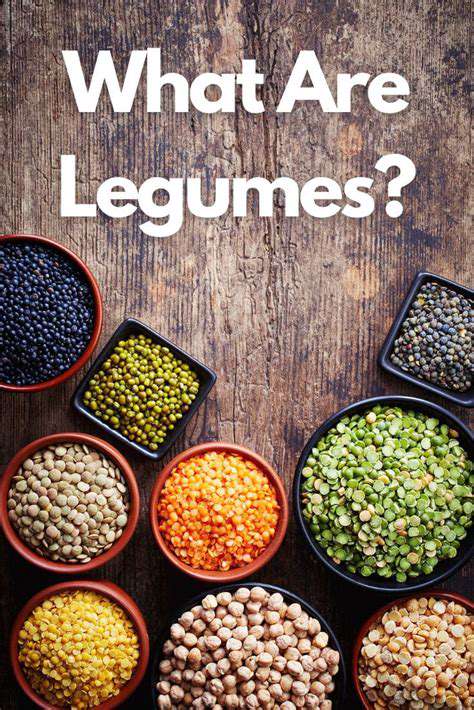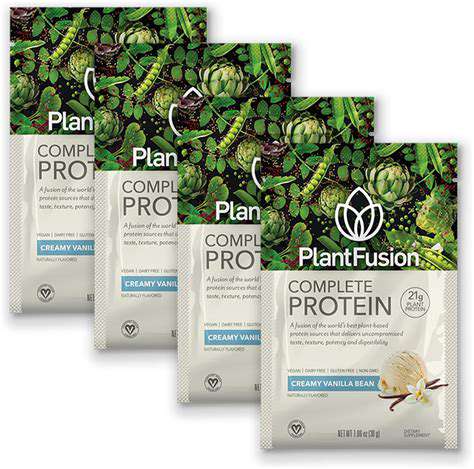Beyond the Usual Suspects: Quinoa and Chia
While Quinoa and chia seeds are frequently lauded for their protein content, they often overshadow other equally impressive plant-based protein sources. Quinoa, a complete protein, boasts a considerable amount of essential amino acids, making it a valuable addition to any balanced diet. Its mild flavor and versatility in various dishes, from salads to soups, make it a popular choice for vegetarians and vegans alike. Chia seeds, similarly, are a powerhouse of nutrition, packed with fiber and omega-3 fatty acids, in addition to a decent dose of protein. Their ability to absorb liquid and form a gel-like consistency makes them a fantastic addition to smoothies and baked goods, further enhancing their nutritional value.
However, understanding the complete protein profile is key. While quinoa and chia contribute significantly, they don't cover all the essential amino acids in the same way as animal-based proteins. A well-rounded plant-based diet that incorporates a variety of protein sources is crucial for optimal nutrition.
Legumes: The Unsung Heroes of Protein
Legumes, encompassing beans, lentils, and peas, are often overlooked but are incredibly valuable sources of plant-based protein. They are relatively inexpensive, readily available, and packed with fiber, essential for digestive health. Red kidney beans, for example, are a fantastic source of protein and fiber, perfect for incorporating into chili, stews, or salads. Their versatility allows for creative culinary exploration, making them a cornerstone of many plant-based diets.
Lentils, another excellent choice, are incredibly versatile and cook quickly. They offer a hearty texture and a neutral flavor, making them a blank canvas for various dishes. Their high protein content and fiber content contribute to a feeling of fullness and sustained energy, making them a healthy alternative to meat-based protein sources.
Nuts and Seeds: A Crunchy Protein Powerhouse
Nuts and seeds are a delectable and convenient way to boost your protein intake. Almonds, walnuts, and cashews, for example, are not only delicious but also provide a good dose of healthy fats and fiber along with protein. Their crunchy texture adds a delightful element to salads, trail mixes, and yogurt, while their nutritional value is a significant contributor to a balanced diet. The protein content in these foods varies, so understanding the nutritional information on labels is important for a precise understanding of their contribution to your daily protein needs.
Soy Products: A Versatile Protein Source
Soy products, such as tofu, tempeh, and edamame, offer a significant amount of protein and are incredibly versatile in the kitchen. Tofu, a firm or silken staple in many cuisines, can be marinated, grilled, or sautéed, mimicking the texture and function of meat in many recipes. Tempeh, a fermented soybean product, boasts a nutty flavor and a firmer texture, making it ideal for stir-fries and other savory dishes. Edamame, the young soybeans, offer a delicious snack or a healthy addition to salads.
Soy products are a complete protein source, offering all the essential amino acids, making them a valuable addition to a balanced vegetarian or vegan diet. However, it's essential to choose minimally processed options to maximize their nutritional benefits.
Grains: A Hidden Source of Protein
While often associated with carbohydrates, many grains contribute a significant amount of protein to a balanced diet. Brown rice, for example, is a good source of protein, fiber, and complex carbohydrates, providing sustained energy. Oats, another excellent option, are a complete breakfast staple, offering protein and fiber to support digestion and satiety. Their versatility in various dishes, from breakfast cereals to side dishes, makes them a practical and delicious addition to a plant-based diet. Different grains offer varying protein levels, so it's worth checking nutrition labels to understand their complete nutritional profile.
Incorporating a variety of grains into your meals can significantly increase your protein intake and contribute to a diverse and healthy diet.
Legumes: More Than Just Beans and Peas

Legumes: A Diverse and Nutritious Food Group
Legumes are a fascinating group of plants, encompassing a wide variety of edible seeds, pods, and even roots. These plants are not just beans and peas; they include lentils, chickpeas, soybeans, peanuts (technically a legume), and many more. They're incredibly versatile, used in cuisines worldwide, and packed with essential nutrients.
These nutritional powerhouses are a staple in many diets, offering a significant contribution to both protein and fiber intake. The diverse flavors and textures of legumes make them adaptable to a wide range of dishes, from hearty soups and stews to flavorful salads and snacks.
Nutritional Benefits of Legumes
Legumes are a fantastic source of protein, offering a complete protein profile in many cases. This means they contain all nine essential amino acids our bodies need but cannot produce on their own. This is a crucial component of a balanced diet, especially for vegetarians and vegans.
They are also incredibly rich in fiber, which is essential for digestive health. Fiber promotes regularity, helps lower cholesterol levels, and contributes to feelings of fullness, aiding in weight management.
Culinary Applications of Legumes
The culinary possibilities with legumes are almost endless. They're used in countless dishes across the globe, from the hearty lentil stews of India to the flavorful hummus of the Middle East. They are often used as a protein source in vegetarian and vegan dishes.
Their versatility extends beyond main courses. Legumes can be added to salads, dips, and even desserts, showcasing their adaptability and enhancing the flavor profiles of various dishes.
Environmental Benefits of Growing Legumes
Legumes are remarkably beneficial for the environment. They often require less water and fertilizer than many other crops, contributing to sustainable agriculture. This reduced environmental impact is significant in the face of growing concerns about the sustainability of our food systems.
Furthermore, legumes have the unique ability to fix nitrogen from the air, enriching the soil and reducing the need for synthetic nitrogen fertilizers, further supporting sustainable farming practices.
Health Implications of a Legumes-Rich Diet
A diet rich in legumes has been linked to various health benefits. Studies have shown a correlation between legume consumption and a lower risk of chronic diseases such as heart disease and type 2 diabetes. This is likely due to the high fiber and protein content, which contribute to better blood sugar control and improved cardiovascular health.
The fiber in legumes also promotes a healthy gut microbiome, which plays a crucial role in overall well-being.
Types of Legumes and Their Characteristics
The world of legumes encompasses a diverse range of varieties. From the familiar beans like kidney beans and black beans to the unique textures of chickpeas and lentils, each type offers its own distinct flavor and culinary application. Knowing the characteristics of different legumes allows for better choice in your cooking.
Understanding the cooking methods for each type is also crucial for achieving the best results, from soaking and sprouting to pressure cooking, each method brings out different nuances in flavor and texture.
Preparation and Storage of Legumes
Proper preparation is key to unlocking the full potential of legumes. Soaking and rinsing legumes before cooking reduces cooking time and improves texture. This step is also important for removing any unwanted substances that may be present.
Proper storage of legumes is essential to maintain their quality. Store legumes in airtight containers in a cool, dry place to prevent them from going rancid or developing unwanted flavors. This will ensure that your legumes remain fresh and flavorful for longer periods.
Seeds: Tiny Packets of Protein Power

The Power of Protein in Tiny Packages
Seeds are remarkable little packages, containing a concentrated burst of nutrients, including an impressive amount of protein. This protein is crucial for building and repairing tissues throughout our bodies, aiding in muscle growth and maintenance. Understanding the protein content in seeds is vital for anyone looking to incorporate a healthy and balanced diet. Many seeds, like chia, flax, and pumpkin seeds, are excellent sources of plant-based protein, making them a valuable addition to smoothies, salads, and even baked goods.
Beyond their protein content, seeds offer a multitude of other health benefits. They're packed with healthy fats, fiber, and essential vitamins and minerals. Incorporating seeds into your daily diet can contribute to better digestion, improved heart health, and a strengthened immune system. The sheer variety of seed types available, each with its unique nutritional profile, makes them a fantastically versatile food source.
Unlocking the Nutritional Potential of Seeds
The nutritional density of seeds is truly remarkable. A small handful of seeds can provide a significant amount of essential nutrients, including vitamins like vitamin E and magnesium. These nutrients play critical roles in various bodily functions, from supporting healthy skin and hair to maintaining strong bones and a healthy nervous system. Furthermore, the fiber content in seeds contributes to digestive health, promoting regular bowel movements and preventing constipation. This is especially important for overall well-being.
Seeds are a fantastic source of healthy fats, which are crucial for optimal health. These healthy fats are essential for hormone production, brain function, and cell growth. They also help to keep you feeling full and satisfied, which can be beneficial for weight management. Seeds, with their concentrated nutritional punch, are a simple way to improve your overall health.
Seed Variety and Culinary Applications
The world of seeds is vast and diverse, with each type offering unique nutritional benefits and culinary applications. From the familiar sunflower seeds and pumpkin seeds to the less common flax and chia seeds, there's a seed out there to suit almost any taste and dietary need. Experimenting with different types of seeds can lead to exciting new flavor combinations and culinary creations.
Incorporating seeds into your cooking can be incredibly simple and rewarding. Sprinkle them on salads, add them to smoothies, or use them as a topping for yogurt or oatmeal. The possibilities are endless. Beyond their nutritional value, seeds also add a delightful crunch and satisfying texture to dishes, enhancing both the taste and the visual appeal of your meals.